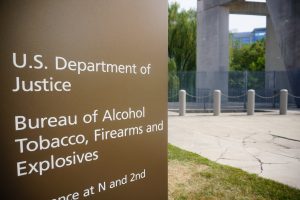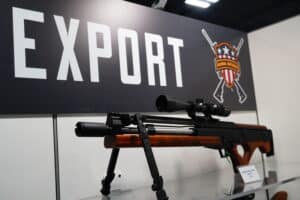While reporting on the Biden Administration’s proposal to ban most stabilizing pistol braces, I asked the ATF a series of questions about the proposal’s details. ATF spokesperson April Longwell told me the “ATF and the Department of Justice cannot further comment on the specific content of the proposed rule,” but “public comment on all of the questions you raise is encouraged.” So, I’ve decided to submit my questions on the proposal as part of the public comment period. My comment is still being reviewed, and I will link to it once it is posted in the Federal Register.
In the meantime, here is the full text of my public comment on the pistol brace ban:
The ATF suggested I submit my questions on the proposal as a public comment to get more detailed answers. There are some distinctions the ATF makes in this rule change that are confusing, and I’m hoping the agency can provide some clarity.
First, The ATF repeatedly relies on the purported intentions of the first person to apply for approval of a pistol brace as the starting point for much of this regulation. Why did it do that instead of relying on statute?
The ATF also uses an inconsistent standard for determining the weight of a gun. When deciding whether a gun is too light to use a brace, it uses an unloaded gun stripped of its accessories. However, when deciding if a gun is too heavy to use a brace, it uses a gun with a magazine inserted all of the accessories equipped. The weight standard also raises the question of subjectivity. It arbitrarily determines weight limits based on what the ATF believes will be beneficial to helping shooters fire the gun with one hand.
Though shooters vary greatly in size and strength, the regulation offers little reasoning for why the ATF chose the weight limits it did beyond a brief discussion of the weight of an unloaded 1911 and, oddly, a loaded Glock 17.
Similarly, the regulation describes a “cuff-type” design as only capable of partially wrapping around a shooter’s forearm even though the size of shooters’ forearms varies greatly. What doesn’t fit around an ATF agent’s forearm very well may fit around the forearm of a person with a smaller build.
The regulation also raises many questions about enforcement.
The ATF estimates there are between 3 and 7 million braces currently owned by Americans. This estimate is at odds with the Congressional Research Service’s April 2021 estimate of between 10 and 40 million devices.
However, even if the ATF’s low-end estimate of 3 million braces is accurate, it seems highly unlikely the agency could handle millions of guns being turned in to its offices. Or even a sudden surge of millions of new NFA registrations. How is the ATF preparing for people to turn in their guns?
Further, recent attempts by the ATF and numerous state law enforcement agencies to confiscate or even register currently-owned firearms or firearms accessories have seen compliance rates either at or approaching zero. Few of the hundreds of thousands of bumpstocks were ever turned in, New York’s SAFE Act only managed to register about 4% of the guns it sought out, and New Jersey State Police did not collect a single magazine after the state outlawed possession of previously legal ammunition magazines capable of holding more than 10 rounds.
How does the ATF intend to deal with people who do not comply with this new regulation? Is there any preparation being made or consideration being given to trying to enforce this? Even if 90 percent of the ATF-estimated 3 million braces are either legal, registered under the NFA, or turned in, that would leave 300,000 to deal with. How could the ATF possibly accomplish that with its current resources?







2 Responses
For excellent content like this I will forgive your execrable taste in sports teams!
Very well thought out questions. Bravo.
You just wait until I retool The Reload into a Philly sports blog!